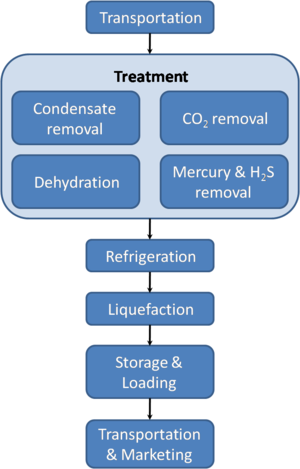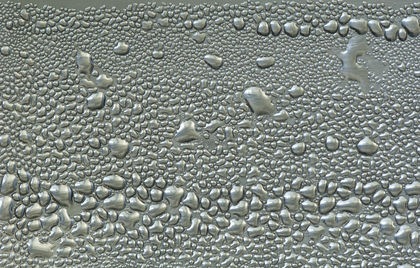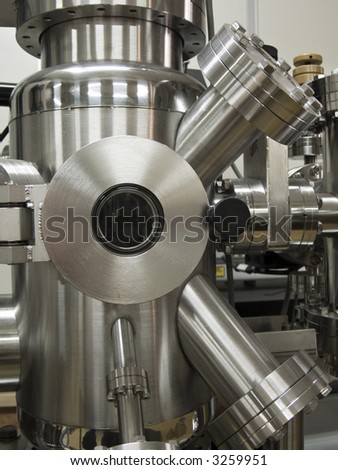Comparison
between adiabatic and Joule-Thomson expansion
(i)
No heat
exchanges with the surroundings are allowed in both the process.
(ii)
Joule-Thomson
expansion where u+PV remains constant, is an isenthalpic process, while adiabatic expansion process where
entropy remains constant, is an isentropic
process.
(iii)
In adiabatic
expansion the work done is useful in the sense that it is utilized in
overcoming some external forces. In both the cases, however, the required
energy is furnished by the kinetic energy of the molecules.
(iv)
Joule-Thomson
expansion may produce either a cooling or a heating effect, whereas adiabatic
expansion can produce only a cooling effect.
(v)
Joule-Thomson
cooling or heating cannot be observed with a perfect gas. But cooling is always
resulted by expanding a perfect gas adiabatically.
(vi)
Intermolecular
forces being necessarily small, Joule-Thomson cooling is less than that
obtainable with adiabatic expansion under similar conditions.
(vii)
An adiabatic expansion
is a reversible process, but a
throttling process is an irreversible
one.
Historical
development of liquefaction of gases
Principle of combined cooling and compression was the
earliest method of liquefaction of gases applied by Faraday (1823). The
apparatus used for the liquefaction of chlorine consists of a bent glass tube,
one end of which containing the substance from which chlorine can be liberated,
is heated while the other end is immersed in a freezing mixture. Chlorine gas
evolving by application of heat liquefies at the cold end when the pressure is
sufficiently high. Faraday also succeeded to liquefy ammonia, sulphur dioxide,
nitrous oxide, carbon dioxide and cyanogens by this process. But gases like
oxygen, nitrogen, hydrogen, carbon monoxide and methane could not be liquefied
by this method, even when extremely high pressure as high as 3000 atmospheres
were applied. Faraday termed them permanent
gases.
The discovery of the critical temperature by Andrews
(1863) during his experiments with carbon dioxide clearly established the fact
that for every gas there is a temperature, (critical temperature) below which
it can be liquefied by application of a suitable pressure, but above this
temperature it cannot be liquefied by application of pressure, however high.
Prior to Andrews’ discovery the idea of this critical temperature was first
suggested by Cagnaird de la Tour in a general way.
Methods
employed in the liquefaction of gases
The various methods employed to liquefy gases may be
classified under the following three heads.
(1) Cascade process, which utilizes a series of liquids
with successive lower boiling points to reach the low temperature in stages.
(2) Regenerative Joule-Thomson process based on the
Joule-Thomson effect and regenerative cooling.
(3) Adiabatic expansion process based on the cooling
produced when a gas expands adiabatically doing external work.
Liquefaction
of helium
The inversion temperature of helium is -238°C (35°A).
So to obtain the Joule-Thomson cooling it must be precooled below that
temperature. Thus the problem of liquefaction of helium was more intricate than
that of hydrogen. In 1908, Kamerlingh Onnes succeeded in liquefying helium by
applying a similar method as that used by Dewar in liquefying hydrogen. Instead
of using liquid air to precool the gas, in this case liquid hydrogen was used.
The process and the plant are similar to that described in connection with the
liquefaction of hydrogen. The critical temperature of helium is 5°A (-268°C)
and liquid helium boils normally at 4.2°A (-268.8°C).
Properties
of liquid helium
Liquid helium shows different behaviors on either
side of a transition temperature of 2.186°A called the lambda point. Above this temperature it behaves in a normal fashion
and is known as helium I. Below
this it behaves as a super fluid and is known as helium II. Helium I contracts but helium II expands on cooling.
Helium II possesses a very low viscosity but abnormally high thermal
conductivity being 200 times that of copper.
Solidification
of helium
Dr. Keeson, in 1926, was able to produce solid
helium, by subjecting the gas to a very high pressure of 130 atmospheres,
cooling it in liquid helium and then allowing it to be expand. Later
experiments showed that helium at 4.2°A solidified under 140 atmospheres and at
3.2°A under 86 atmospheres and at 1.1°A under 23 atmospheres. The
solidification point of helium has not yet been definitely established. But it
is known to be within 1°A. So helium can hardly be distinguished visually from
the liquid helium and hence must have almost the same refractive index as the
liquid.
Properties of material at very low temperatures
(1) The atomic heat of all substances tends to zero of
temperature is approached.
(2) The magnetic susceptibility of paramagnetic salts
varies inversely as the absolute temperature in the region of very low
temperatures.
(3) The electrical resistance of metals in most cases
vanishes or becomes negligible at very low temperatures. This is known as super-conduction (or supra-conduction).
A current once induced in a super-conductor continues undiminished for days
together, so long as the temperature is kept low.
(4) The rate of chemical action is considerably reduced.
(5) Bacteria and seeds are found to retain their
germinative activity unimpaired even after exposure to liquid air temperature,
though a moderately high temperature kills them.
(6) Some materials like cotton, wool, leather, etc. begin
to fluoresce after exposure to liquid air temperature.
(7) Lead becomes plastic at -190°C, while India rubber
and glass become brittle.
Uses of
liquid air and other liquefied gases
(1)
Production of high vacuum:
High vacuum can be obtained
by using liquefied gases. For examples, if a vessel filled with a less volatile
gas than air, such as sulfurous acid or water vapor is surrounded by liquid
air, all the gas inside becomes solidified and thus high vacuum is produced. If
air be present in the vessel, liquid hydrogen may be employed to condense it.
If charcoal be put inside the vessel, it will absorb the gas and help producing
high vacuum.
(2)
Analytical uses of air:
Liquid air is of great use
in drying and purifying gases. Water vapor and the less volatile impurities are
easily removed by surrounding the gas in question with the liquid air and for
this purpose it is now used as a common laboratory reagent.
(3)
Preparation of oxygen and rare gases from liquid air
by fractional distillation:
The boiling point of
nitrogen is -195.8°C and that of oxygen is -182.9°C. Hence, if liquid air forms
an easy method of obtaining these constituents. Air also contains small traces
of rare gases, such as helium, neon, argon, krypton and xenon. These are also
obtained from liquid air by fractional distillation.
(4)
Calorimetric application:
In order to find the
specific heat of substances at low temperatures calorimeters of liquid air,
liquid oxygen or liquid hydrogen may be employed just like an ice calorimeter.
(5)
Use of liquefied gases in scientific research:
Properties of materials at
low temperatures have been studied and found different from those at ordinary
temperatures. Bacteria and seeds retain their activity unimpaired even after
exposure to liquid air temperature though a moderately high temperature is
fatal.
(6)
Industrial uses of liquefied gases:
Liquid oxygen for
industrial uses is also obtained from liquid air. Liquid air and liquid oxygen
are stored for use in submarines and hydroplanes for respiration. Liquid oxygen
and hydrogen have recently been used as components of fuel for rockets. Liquid
oxygen mixed with charcoal is employed for preparing explosives.









atico export are the leading manufacturer and supplier of Expansion Processes of a Perfect Gas in india.
ReplyDelete